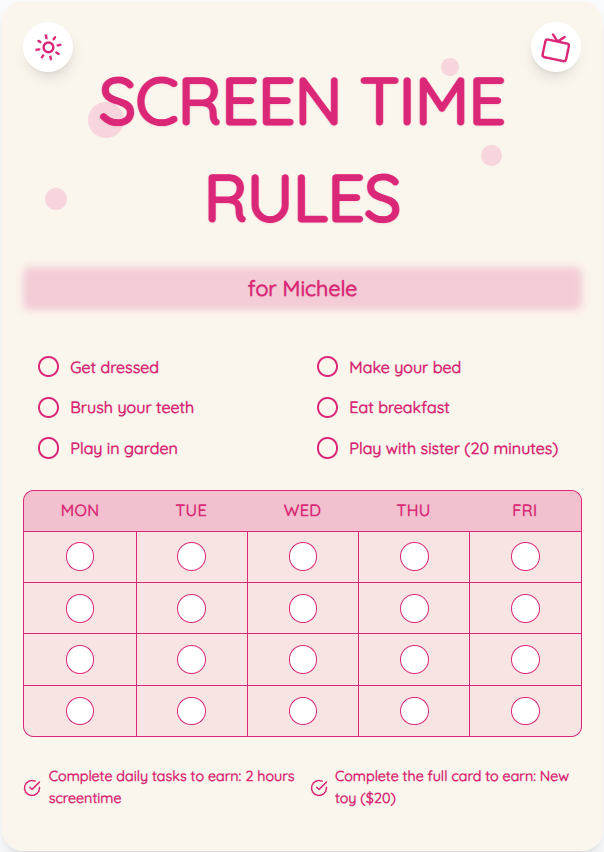Understanding the Importance of Limiting Screen Time for Children
In today's digital age, managing children's screen time has become a crucial aspect of parenting. Excessive screen time can have negative impacts on children's development, behavior, and overall well-being. Let's explore why setting limits on screen time is essential and uncover practical tips to help parents navigate this challenge.
See What Your Screen Time Chart Will Look Like
Here's an example of a beautiful, customizable screen time rules chart you can create for your family

The Impact of Excessive Screen Time on Child Development
Excessive screen time has been linked to various issues such as obesity, sleep disturbances, poor academic performance, and delayed social skills. Children need time away from screens to engage in physical activities, social interactions, and creative play that are vital for their growth and development.
Setting Healthy Boundaries: Practical Tips for Parents
1. Establish clear screen time rules and communicate them effectively with your child. 2. Create a screen time chart to visually represent and track daily screen time limits. 3. Encourage alternative activities like reading, outdoor play, and arts and crafts. 4. Be a role model by limiting your own screen time and engaging in quality time with your child.
Put These Tips Into Action
Create a custom chart to implement these strategies with your child
Utilizing Screen Time Charts for Effective Management
Screen time charts are valuable tools that help parents monitor and regulate their child's screen time usage. These charts provide a visual reference for both parents and children, making it easier to adhere to set limits and maintain a healthy balance between screen time and other activities.
Practical Tips for Success
- Set specific daily screen time limits based on your child's age and individual needs.
- Encourage unplugged family time by designating screen-free zones in your home.
- Use parental control features on devices to restrict access during certain times.
- Involve your child in creating screen time rules to promote their understanding and cooperation.
Frequently Asked Questions
How much screen time is appropriate for my child?
The American Academy of Pediatrics recommends no more than 1 hour of high-quality screen time per day for children ages 2-5. For older children, it is advisable to limit screen time to 2 hours or less.
How can screen time affect my child's sleep?
Excessive screen time, especially before bedtime, can disrupt sleep patterns due to the blue light emitted by screens. It is recommended to establish a screen-free bedtime routine to promote better sleep quality.
How can I help my child reduce screen time without causing conflicts?
Engage in open communication with your child about the reasons behind limiting screen time. Offer alternative activities and incentives to make the transition smoother. Consistency and positive reinforcement are key in reducing conflicts.
By understanding the detrimental effects of excessive screen time and implementing practical strategies like using screen time charts, parents can create a balanced approach that promotes healthy child development and family harmony. Visit ScreenTimeRules.com to access customizable screen time charts and take the first step towards managing screen time effectively.
Ready to Transform Your Family's Screen Time?
Join thousands of parents who have successfully managed screen time with our customizable charts.
